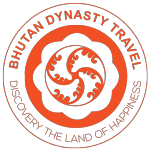Currency of Bhutan
The Bhutanese Ngultrum is the currency of Bhutan. The most popular Bhutan Ngultrum exchange rate is the BTN to INR rate. The currency code for Ngultrum is BTN. Bhutan unit of currency is the Ngultrum (Nu), with 100 Chetrum = 1 Ngultrum. The Ngultrum is fixed to the value of Indian rupee. Tourists are advised to carry their money in form of traveler checks (preferably American Express) with a little cash (US Dollars) which might be needed for incidental expenses. A few places accept visa and American express credit cards
Language
Dzongkha, ‘the language of Dzong’, is one of the Tibetan family of languages. Originally spoken only in western Bhutan, Dzongkha is now the Bhutanese national language. English is commonly spoken in main towns and also it is the medium of education in schools throughout the Kingdom.
Dzongkha and its dialects are the native tongue of eight western districts of Bhutan (viz. Wangdue Phodrang, Punakha, Thimphu, Gasa, Paro, Ha, Dagana and Chukha). There are also some speakers found near the Indian town of Kalimpong, once part of Bhutan but now in West Bengal.
Dzongkha was declared as the national language of Bhutan in 1971. Dzongkha study is mandatory in all schools in Bhutan, and the language is the lingua franca in the districts to the south and east where it is not the mother tongue.
Dzongkha is usually written in Bhutanese forms of the Tibetan script known as Joyi (mgyogs yig) and Joshum (mgyogs tshugs ma). Dzongkha books are typically printed using Ucan fonts like those to print the Tibetan abugida.
Dress
The national dress for Bhutanese men is the gho, a knee-length robe tied at the waist by a cloth belt known as the kera. Women wear an ankle-length dress, the kira, which is clipped at the shoulders with two identical broaches called the koma and tied at the waist with kera. An accompaniment to the kira is a long-sleeved blouse, the wonju which is worn underneath the kira. A long-sleeved jacket-like garment, the toego is worn over the kira. The sleeves of the wonju and the tego are folded together at the cuffs, inside out. Social status and class determine the texture, colours, and decorations that embellish the garments. Differently coloured scarves, known as rachu for women (red is the most common colour) and kabney for men, are important indicators of social standing, as Bhutan has traditionally been a feudal society. Jewellery is mostly worn by women, especially during religious festivals (tsechus) and public gatherings. To strengthen Bhutan’s identity as an independent country, Bhutanese law requires all Bhutanese government employees to wear the national dress at work and all citizens to wear the national dress while visiting schools and other government offices though many citizens, particularly adults, choose to wear the customary dress as formal attire.
Religion
The early inhabitants of Bhutan practiced ‘Bonism’, a practice of making animal sacrifice and worshiping non-living objects such as mountains, lakes, rivers, trees and rocks. With the advent of Buddhism in 7th century the Bonism gradually disappeared from the country. The country’s official religion is Drukpa Kagye, school of tantric Mahayana Buddhism, which is similar to Tibetan Buddhism but has unique beliefs and practices. The religious affair of the country is looked after by the Je Khenpo (Chief Abbot) who also enjoys equal power as the king. The Bhutanese people of Nepali origin in the south practice Hinduism.




